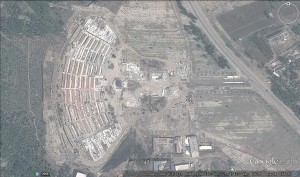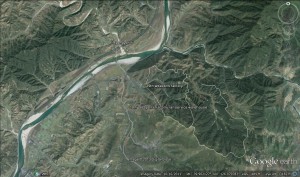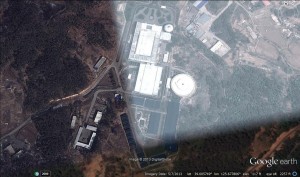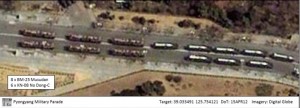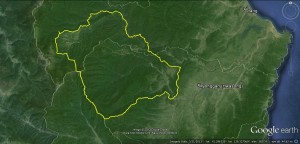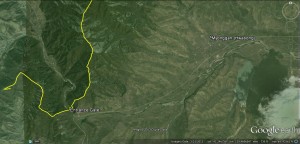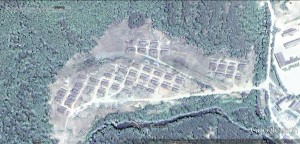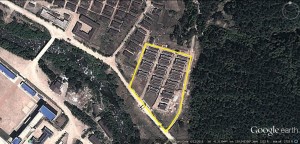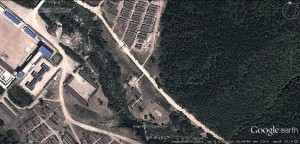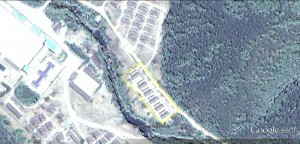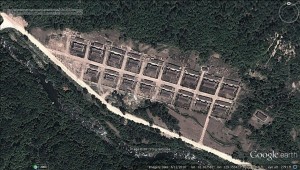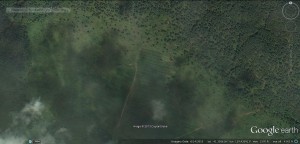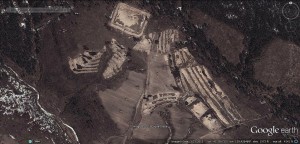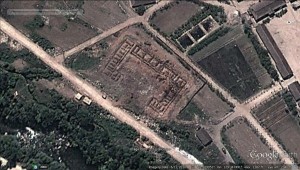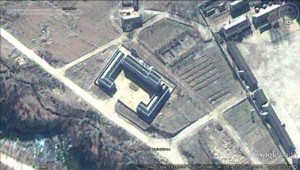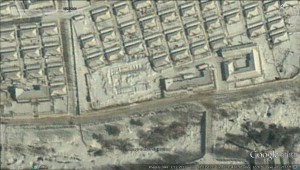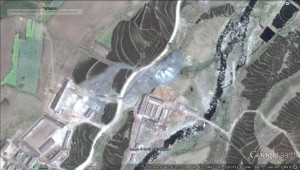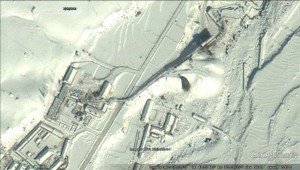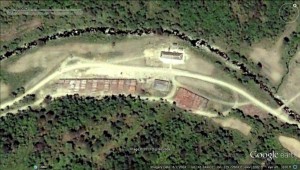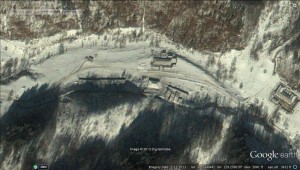UPDATE 4 (2013-7-29): The Americans were unable to make it to the Chosin Reservoir. According to the AP:
A decorated Korean War veteran from Massachusetts left North Korea on Monday without fulfilling his mission: to travel the Chosin Reservoir battleground where he was hoping to locate the remains of a friend who was the U.S. Navy’s first black aviator.
…
On Sunday, Senior Col. Pak Gi Yong assured Hudner that the Korean People’s Army was committed to helping him find the spot in the area where he and Brown went down. He said last week that the army sent an advance team to Jangjin but that flooding had washed away roads to the site, making travel to the region treacherous.
…
Hudner, of Concord, Massachusetts, said he was disappointed but hoped to return later in the year to finally fulfill his promise to Brown.
“I have a feeling of great hope as a result of our mingling and meeting the officials here in (North) Korea,” he said before departing. “I feel we’ve accomplished a lot because of the appearance of mutual hope between us and the North Koreans.”
UPDATE 3 (2013-7-25): Two American Korean war vets attended the opening of the Cemetery of Fallen Fighters of KPA. Kim Jong-un was also in attendance:
According to VOA:
Marshal Kim Jong Un cut a red ribbon to inaugurate what is officially known as the Fatherland Liberation War Martyrs Cemetery. Soldiers in dress uniforms briefly goose stepped at the event, kicking off days of commemoration of what the country considers the 1953 victory over U.S.-led United Nations forces on the Korean Peninsula.
…
At the cemetery’s inauguration were two highly decorated U.S. veterans of that war. Medal of Honor winner Thomas Hudner, who was a Navy pilot, was invited as part of his visit to the country during which he hoped to gain access to the Chosin Reservoir battle site where his wingman, Jesse Brown, crash-landed. Hudner, who is 88, says the ceremony at the cemetery was an emotional experience as he remembered his fallen comrades
“Well it’s a very emotional occasion to be here with so many veterans – not only the veterans but also the people of the nation who turned out to show their support to all of veterans,” he said. “And as an American veteran, I am delighted to see that our former foe and we share some of the same feelings about this. So it is great to be here.”
Hudner added he regards these types of memorials as a tribute to all of the war’s combatants, regardless of which side they were on. The American veteran, who crash-landed his plane in an unsuccessful effort to rescue Brown, intends to return here in September to precisely locate the remains of his fellow pilot. His hopes to reach the site this week were thwarted by severe flooding in the country.
UPDATE 2 (2013-7-22): Pictured below, Ryongyon-ri in Kujang County (acrocc from the 39th Weapons Factory):
According to VOA:
North Korean military officers have informed VOA News that the partial remains of what appear to be several U.S. soldiers from the Korean War were discovered after severe flooding around July 10.
Villagers are said to have spotted several pairs of American military shoes that led to the human bones at Ryongyeon-ri, Kujang County, in North Pyongan province. Travel from the capital Pyongyang to the area has been restricted because the main and alternate highways have been partly destroyed.
Travelers can see an approximately 50-meter section of one direction of the primary road fully destroyed, the pavement having crumpled away and fallen dozens of meters. At another point, part of the pavement on a bridge has buckled.
Among those traveling on the hazardous road on Monday evening was American, Thomas Hudner, 88, from Concord, Massachusetts. Hudner is back in North Korea for the first time in 63 years. He crashed landed his Navy plane on a slope in the Chosin Reservoir in December 1950, in an unsuccessful attempt to save his wingman Jesse Brown who had crash landed his Corsair F4U jet after apparently being hit by ground fire during a fierce Korean War battle.
Hudner hopes to return to the site to try to find Brown’s body, but the current flooding in the country is likely to prevent him from reaching the site. Hudner is on a private mission to North Korea. U.S. military search and recovery teams have not entered the country in seven years. Since then, tensions between Pyongyang and Washington have increased.
Read the full story here:
N. Korea Flooding Hampers Search for Downed US Pilot
VOA
Steve Herman
2013-7-22
UPDATE 1 (2013-7-22): Flooding is hampering the search, but Mr. Hudner became the first American to visit the KPA Exhibition of Arms and Equipment.
Pictured above: The KPA Exhibition of Arms and Equipment
According to VOA:
Flooding may dash the hopes of Thomas Hudner and accompanying Americans of getting to the Chosin Reservoir this week.
They have come to North Korea to try to find and retrieve the body of U.S. Navy pilot Jesse Brown.
Hudner, who was awarded the Medal of Honor for trying to rescue Brown, in the meantime has become the first American through the doors of the recently opened Korean People’s Army Museum of Weapons and Equipment.
The 88 year old Hudner, along with 83 year old Dick Bonelli, a Marine who fought on the ground at the 1950 Chosin Reservoir battle against Chinese troops, were welcomed at the museum by North Korean military officers.
Senior Colonel Jeon HakCheol expressed full confidence in the quality of North Korea’s military equipment to bring about a victory in a war. Tanks on display were painted with the phrase ‘Let’s annihilate the U.S. imperial aggressors, the blood enemy of the Korean people.’
Also on display are scale models of American tanks, ships and aircraft.
VOA News asked the colonel for his assessment of the Abrams tanks of the U.S. army deployed in South Korea. He said their weaponry is excellent and their mobility wonderful, but the rough Korean terrain makes it impossible to use the Abrams for warfare here.
The museum’s gift shop offers for sale small plastic models of several U.S. aircraft. The B-2 bomber sells for $90, and American currency is accepted.
ORIGINAL POST (2013-7-20): According to Voice of America:
A U.S. Navy pilot from the Korean War arrived in North Korea on a commercial flight Saturday to search for the remains of the fellow aviator he unsuccessfully tried to rescue 63 years ago – an act for which he was awarded America’s highest military honor.
Thomas Hudner, who is 88, is part of a private American search team given permission by North Korean authorities to look for the remains of his friend, U.S. Navy Ensign Jesse Brown, and their F4 Corsairs at Hagaru-ri at the foot of the Chosin reservoir.
“Jesse Brown is entitled to every bit of help he can get even though it’s well after death,” Hudner told VOA.
The unprecedented mission in the country, which has no diplomatic relations with the United States, hopes to shed light on a poignant story from combat aviation history.
“When this opportunity came up [to go back to North Korea], at first, I was very skeptical,” he said. “It’s almost unbelievable and I’m delighted that so many people would take an interest in it.”
Risky crash landing in enemy territory
Jesse Brown was the first African-American to be trained by the U.S. Navy as an aviator. On his 20th combat mission in the Korean War, he crash landed his plane on a near vertical snow-covered slope on December 4, 1950.
Brown and Hudner were each flying as part of a mission providing air support for 8,000 Marines badly outnumbered by Communist Chinese soldiers in sub-freezing weather.
From his own plane, Lt. Hudner realized Brown had survived the impact and was alive in the crumpled jet.
Hudner decided to crash land his plane some 100 meters away from Brown. A Marine helicopter, at Hudner’s request, dropped an ax so that he could try to free Brown from the crumpled metal cockpit.
Hudner did not succeed. He was persuaded by Marines to be lifted to safety before nightfall and took with him Brown’s dying words: “Tell Daisy I love her.”
Thomas Hudner was initially reprimanded for deliberately destroying his multi-million dollar aircraft in what some superior officers considered a foolhardy act. But the military later had a change of heart.
President Harry Truman ultimately chose to acclaim Hudner as a hero and award him the first Medal of Honor since World War Two for “conspicuous gallantry and intrepidity at the risk of his life.”
Read the full story here:
US Aviator Returns to N. Korea in Search of Fellow Pilot’s Remains
Voice of America
Steve Herman
2013-7-20
